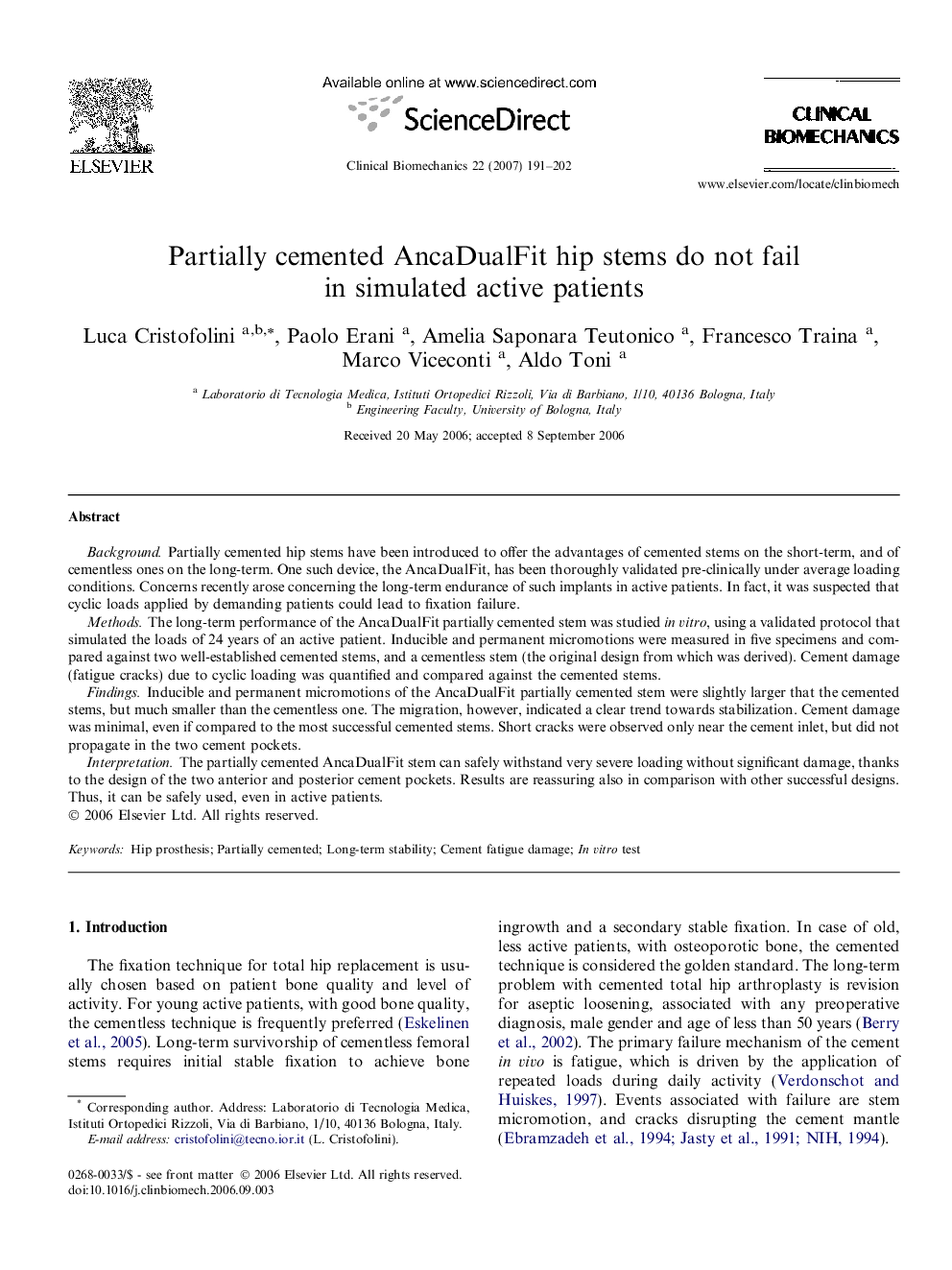| Article ID | Journal | Published Year | Pages | File Type |
|---|---|---|---|---|
| 4051317 | Clinical Biomechanics | 2007 | 12 Pages |
BackgroundPartially cemented hip stems have been introduced to offer the advantages of cemented stems on the short-term, and of cementless ones on the long-term. One such device, the AncaDualFit, has been thoroughly validated pre-clinically under average loading conditions. Concerns recently arose concerning the long-term endurance of such implants in active patients. In fact, it was suspected that cyclic loads applied by demanding patients could lead to fixation failure.MethodsThe long-term performance of the AncaDualFit partially cemented stem was studied in vitro, using a validated protocol that simulated the loads of 24 years of an active patient. Inducible and permanent micromotions were measured in five specimens and compared against two well-established cemented stems, and a cementless stem (the original design from which was derived). Cement damage (fatigue cracks) due to cyclic loading was quantified and compared against the cemented stems.FindingsInducible and permanent micromotions of the AncaDualFit partially cemented stem were slightly larger that the cemented stems, but much smaller than the cementless one. The migration, however, indicated a clear trend towards stabilization. Cement damage was minimal, even if compared to the most successful cemented stems. Short cracks were observed only near the cement inlet, but did not propagate in the two cement pockets.InterpretationThe partially cemented AncaDualFit stem can safely withstand very severe loading without significant damage, thanks to the design of the two anterior and posterior cement pockets. Results are reassuring also in comparison with other successful designs. Thus, it can be safely used, even in active patients.
